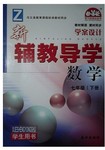题目内容
“Mom, can I take some bread?” We were 15; my best friend, Hanna, and I, determined to try our hands at creating some beautiful bread.
“It’s not worth the trouble,” my mother said. “It takes lots of time and makes a big mess. Our bakery bread is delicious without all that effort.”
Begging was useless. Mom’s “no” meant “No!”
But several weeks later, opportunity knocked. My parents were going out for the evening. I immediately invited Hanna to be my partner in bread-baking crime.
We studied the recipe. That was easy. “Mix oil into flour then beat in four eggs, one at a time, with remaining sugar and salt.”
We were not good at breaking eggs. I tried to learn from my mother.
“Gradually add eight cups of flour. When dough (面团) holds together, squeeze it.”
We took turns working like that. “Is the dough ‘holding together’?” we asked each other.
I remembered my neighbor’s instructions: “If it’s too sticky, add some flour; if too dry, add water.”
We added water. Then more flour. Then more water. By then, the mass of our dough had grown very much.
“Place dough on floured surface and squeeze till smooth,” the recipe instructed.
We took turns burying our hands in the damp dough, pinching, squeezing, and feeling it leak between fingers. “Clean and oil bowl, and then return dough to bowl. Cover and let dough rise in a warm place for one hour.”
This was good news—we’d have a break. On the dirty kitchen chairs, we dreamed about our beautiful bread. “See?” we would tell my mom. “Isn’t it worth the work?”
Hanna and I couldn’t help glancing at the rising process every few minutes. But nothing happened.
“Maybe something will happen in the hot oven,” I said.
Unfortunately, when we removed the loaves from the oven, they were like hard stones.
Mom was right; it takes time and effort. It sometimes makes a mess. But still it feels good, somehow, to be part of that long, ongoing chain of bread bakers. Since that night, both Hanna and I have learned to do it right.
1. To the writer, what her mother said was _________.
A. law B. rubbish C. advice D. warning
2. Which of the following can best describe the children’s feelings while making their first bread?
A. Confident; hopeful; disappointed
B. Curious; hopeful; disappointed
C. Interested; excited; satisfied
D. Worried; satisfied; proud
3. Which of the following did the writer do without referring to the instructions?
A. Placed dough on floured surface.
B. Added eight cups of flour to eggs.
C. Returned dough to a cleaned bowl.
D. Placed the dough into the hot oven.
4. The passage mainly tells us ___________.
A. the process of making bread
B. the conflict between mother and daughter
C. the first experience of making bread
D. the way of doing housework
ABDC

 新辅教导学系列答案
新辅教导学系列答案 阳光同学一线名师全优好卷系列答案
阳光同学一线名师全优好卷系列答案